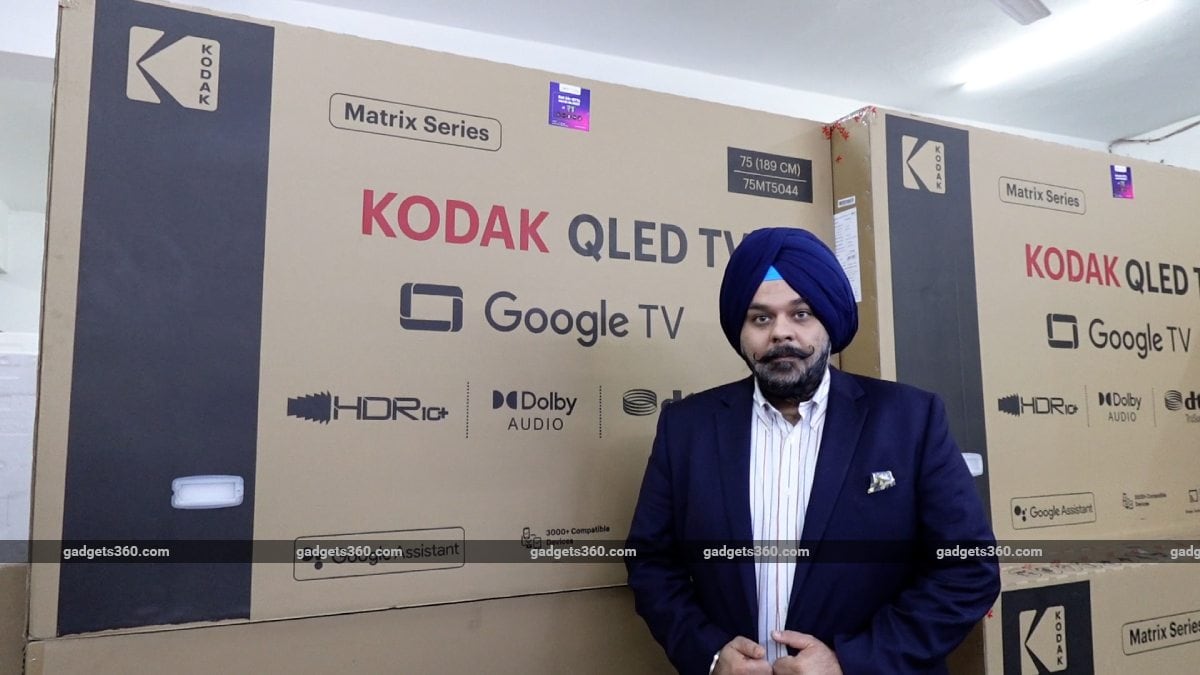Question – What inspired SPPL to enter the consumer electronics industry and what changes have taken place in the company over the years? What are the company’s expansion plans in the future?
SPPL was started in 1990. Our company started with the business of plastic injection molding and expanded into manufacturing of CRT, LCD and LED TVs. After this we entered consumer durable products including appliances like washing machines, air coolers and air conditioners. As the penetration of products increased in the country, we started investing in these categories. Currently we manufacture Google TVs ranging from 32 inches to 86 inches. Our portfolio includes products like air coolers, washing machines, air conditioners and speakers. In India, we have licenses for foreign brands like Kodak, Thomson, Blaupunkt, Westinghouse and White-Westinghouse and we sell our products under these brands. We are expanding manufacturing and our new plant in Hapur, Uttar Pradesh is going to start soon. Apart from this, we plan to enter foreign markets in the next five years.
Question – Indian market is very competitive. Some big Chinese smartphone companies are closing their smart TV business. You sell TVs under four brands. What is the secret to your success?
I believe that the companies which have closed their smart TV business in the country have lagged behind in understanding consumer behavior. They may be big players in the smartphone segment but the smart TV segment is completely different. A leading smartphone brand had entered the country as a premium brand but later launched low-priced TVs, thereby weakening the brand identity associated with their TV products. First of all we have to understand that TVs and Smart TVs are different segments. The value of the mobile market is 350 million dollars, while the TV market is worth 12 to 15 million dollars. Different strategies are needed for both of these. Many big companies merge their TV and mobile businesses, which leads to losses as they are not able to understand the ROI in the TV segment.
Furthermore, one of the major reasons why this segment is struggling is the lack of investment in infrastructure. Their focus is mainly on mobile. TV is a volume product and requires investment in many areas like logistics, warehousing, manufacturing and after-sales service. You have to provide service in more than 19,000 pin codes. These companies had tried to merge this ecosystem but it did not prove successful. On the contrary, we want to increase competition in India. For this reason we have introduced many smart tv Brands have been introduced and they are performing well. We will continue to make major investments in infrastructure and this is critical to our success.
Question – How do you see the future of the smart TV market in India in the next three-five years and what are the trends emerging in the industry that SPPL plans to take advantage of?
The biggest change in the smart TV segment is that customers are preferring larger screen sizes. In the future, the 55-inch size will become the entry-level standard and will replace the current 43-inch, which was earlier 32-inch. The average size of TV in developed countries is 75 inches. Another change is the focus on advanced technologies like Dolby, DTS and sound innovations. Quality is the priority for urban customers, which is leading to investment in larger screen sizes and better technology. We are also focusing on this trend. A large number of people are buying TV on EMI, so that they can take advantage of advanced technologies.
Question – In 2024, you have launched speakers in the market under the Thomson brand. How is the customer response in this category?
We have received good response from customers for the speakers. However, the timing of the launch was challenging as we launched the speakers at the peak of the festive season when other companies were aggressive with pricing. We believe it would have been better to launch a little earlier. However, we have big plans for the speaker category and will launch many more products.
Question – Do you think that affordable projectors can affect the growth of smart TV sales? Do you have any plans to enter this segment?
Televisions and projectors are for different markets. Because of this, it is difficult for projectors to replace TV in the future. The technology of these two is different. Just as tablets have not affected mobile sales, similarly projectors and TVs have their own separate markets. There will be strong growth in both these segments but they will not replace each other. There are many high-quality projectors available and each offers a different viewing experience. Additionally, projectors require a white background or wall, which is not necessary for TVs. With rising real estate prices, many people live in smaller homes and making projectors for such spaces is a challenge.
Question – What will you request Finance Minister Nirmala Sitharaman in next year’s budget?
Our request to the Finance Minister will be to reduce GST on TVs from 28 percent to 18 percent. TV is not a luxury product and hence 28 percent GST makes no sense. Additionally, there is a need to improve ease of doing business at the grassroots level. Despite single-window clearance, multiple approvals are still required, which takes time. The Finance Minister should focus on strengthening consumer sentiment.


